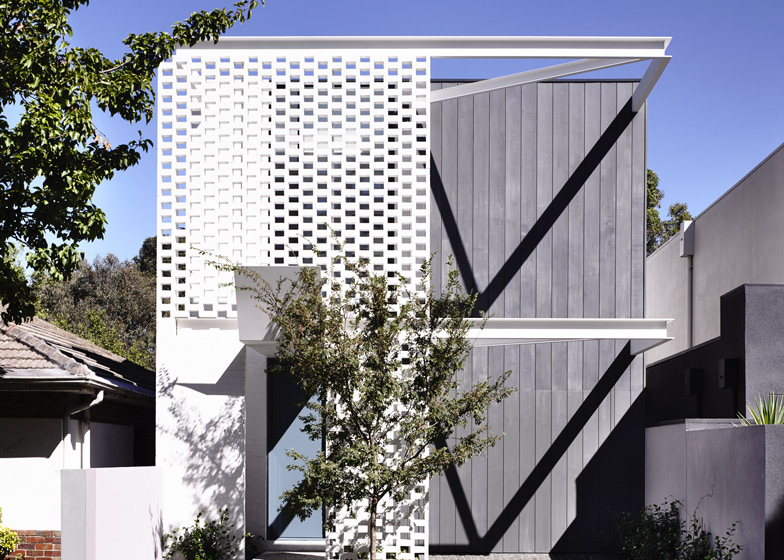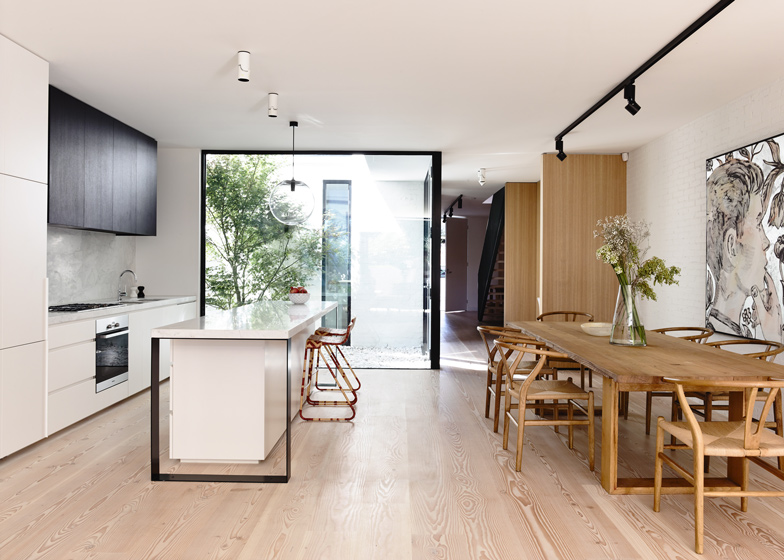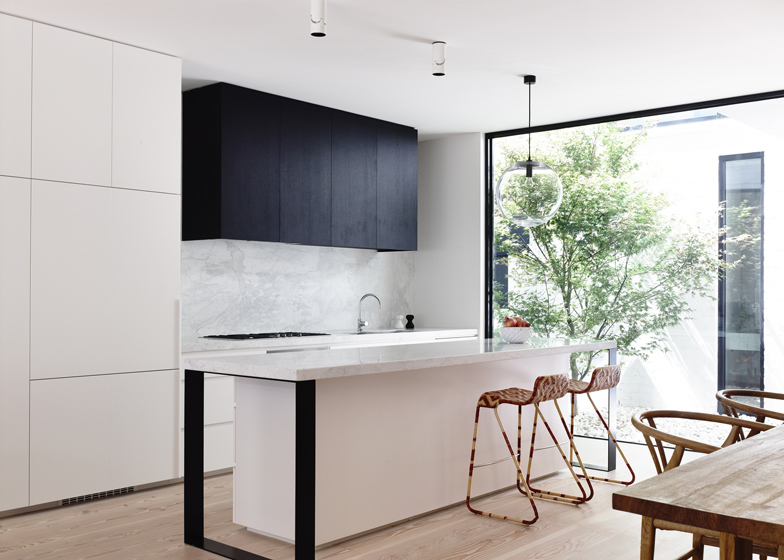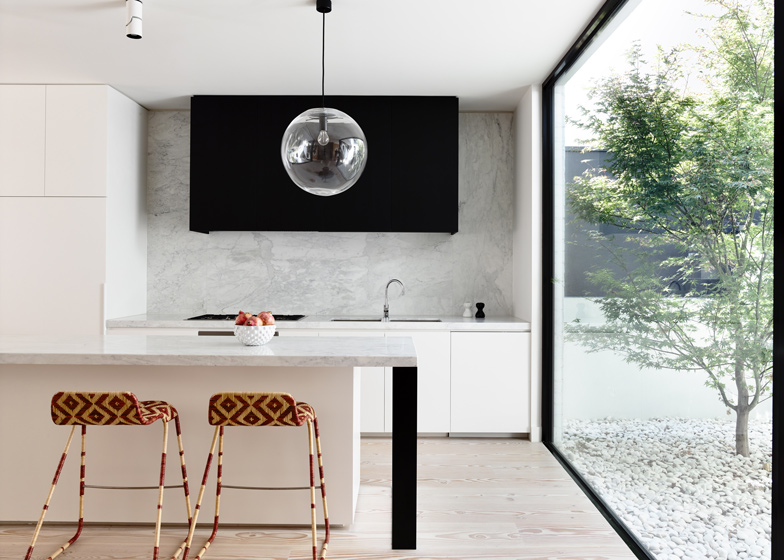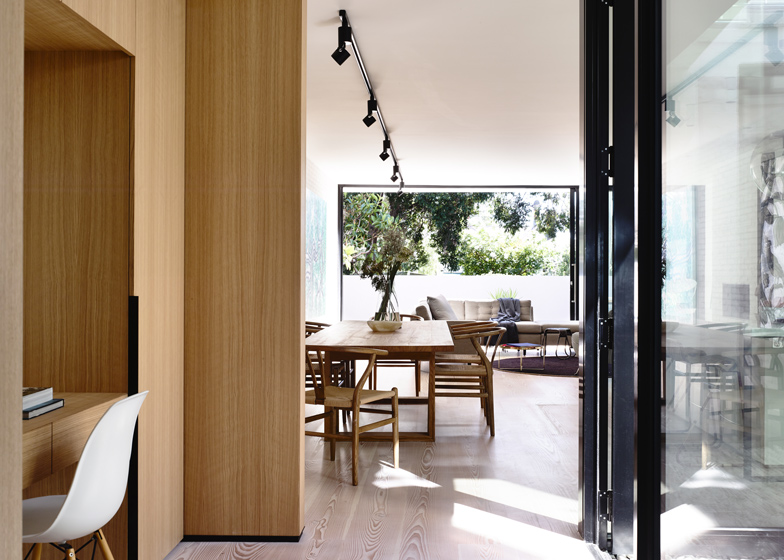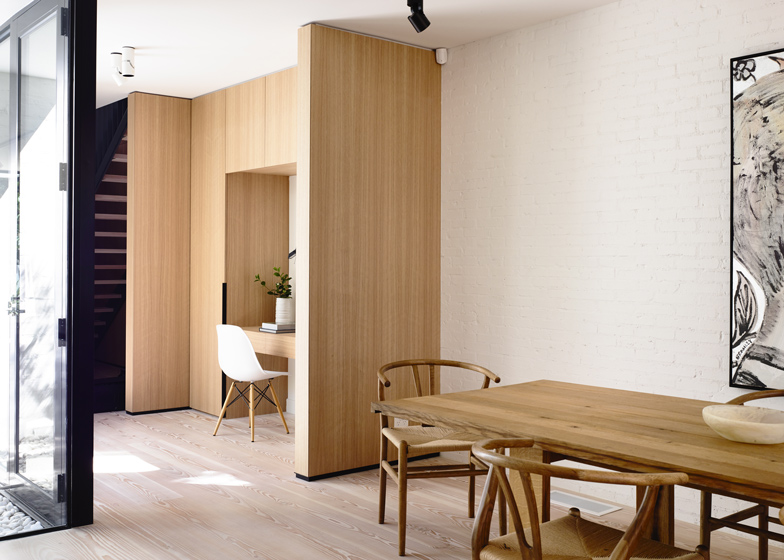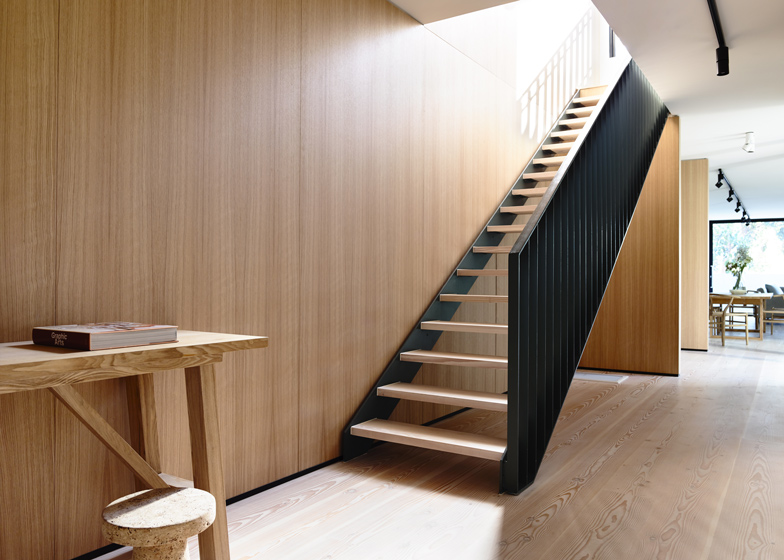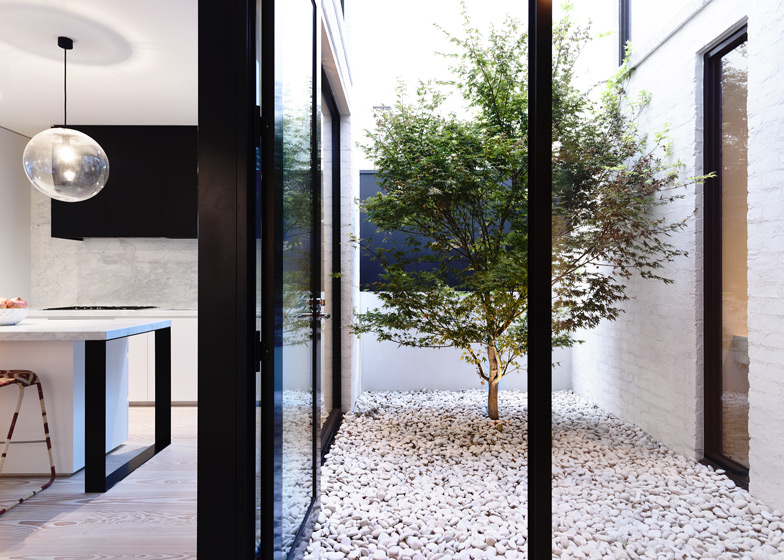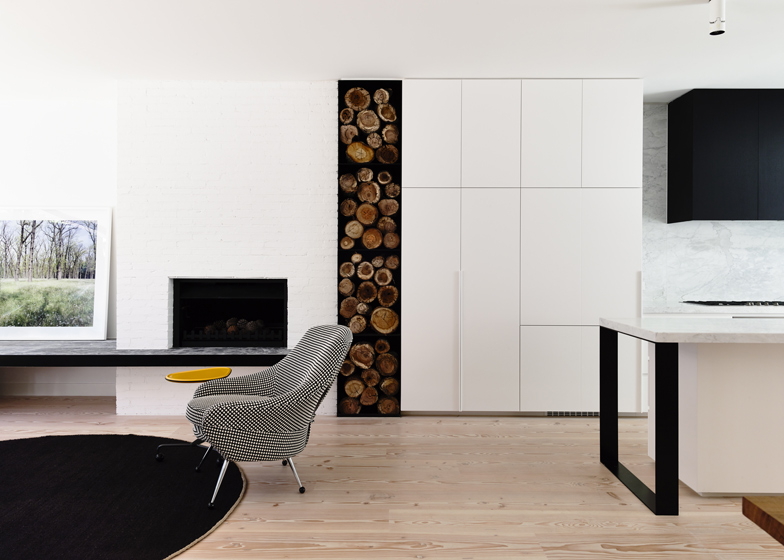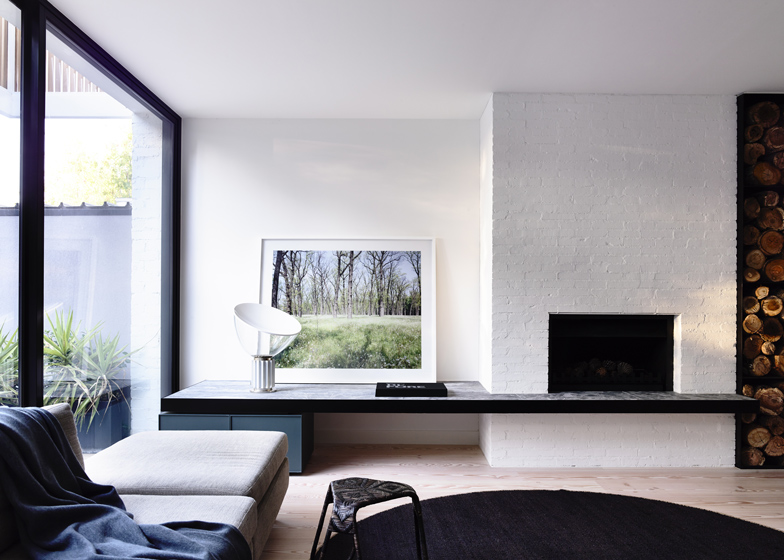Perforated bricks soften the facade and provide privacy for the owners of this Melbourne house by Australian studio Inglis Architects (+ slideshow).
Fairbairn House faces public parks at the front and back, so Inglis Architects designed the perforated brick facades to maintain views while providing a permanent privacy screen for the master bedroom situated at the front on the upper floor.
Supported on rings of steel I beams that extend from the main structure, the screen also helps to visually distance the house from the street in the absence of a front fence.
"It was our ambition that the house engaged with its environment and the individual," said the architects. "A key strategy employed to do this involved layering up the front elevation to the street to create depth as opposed to a flat facade."
The ground floor has an open-plan kitchen, living and dining space at the back, with a small study between this area and the entrance hall. The first floor features three bedrooms with views of the treetops, as well as a family bathroom, an en-suite bathroom and a laundry room.
The house takes up the full width of its plot, so Inglis Architects also added an internal courtyard at the centre of the plan.
It allows daylight from the north to penetrate both storeys, with full-height glazing wrapping around one corner on the ground floor and first-floor windows looking out onto it.
"The small site is located in a suburb where house and land sizes are traditionally big. The client wanted to create a generous house that was spatially in keeping with those in the area," said the architects.
The entrance hall and study are finished floor-to-ceiling in timber, and grainy wood has been used for the flooring throughout.
In the main living space, bricks have been left exposed and painted white. Marble is used for the kitchen countertops and against the wall behind the cooking area, as well as in the bathrooms upstairs.
"The house is refreshing. It requires minimal furnishing to feel warm and hospitable due to the soft natural finishes," said the architects. "The floorboards, stone and masonry here are on show and the light fittings and furniture are purposefully simple and pared back, allowing the interiors to breathe."
Photography is by Derek Swalwell.
Here is some more text from Inglis Architects:
Fairbairn House, Melbourne, Australia
The site on which the house was built presented it's own set of intricacies and opportunities. The narrow site is bound by houses on either side but is fortunate to face parks at both the front and the rear. This rare find in inner-city Melbourne is initially what attracted the client. The small site is located in a suburb where house and land sizes are traditionally big. The client wanted to create a generous house that was spatially in keeping with those in the area.
A simple architectural language of masonry, timber and stone was enlisted for the house. The materials are exposed for what they are, chosen for their unique character and pushed to their physical extents. Whether through brick perforated screens, steel cantilevers or custom timber claddings.
There was great emphasis placed on the front facade due to the house being infill between neighbouring buildings. It was our ambition that the house engaged with its environment and the individual. A key strategy employed to do this involved layering up the front elevation to the street to create depth as opposed to a flat facade.
The house presents itself to the public and does not seek refuge behind a fence. Whilst doing so it only hints of its inner workings through materiality allowing a mounting of suspense. The breezeway brick screen is a key device and creates these necessary layers. It serves multiple purposes. The first being a strong idea of entry by creating a secondary landscaped space which gives the property a sense of intimacy. The steel entry canopy folds out between the screen welcoming you and it's at this point that there is a mental and physical threshold where one moves from the public to the private. The second purpose was to create a permanent privacy screen for the master bedroom which was situated at the front of the house so that it could engage with the adjacent park.
From the exterior, the architectural language purposely allows the building to interact with its environment. Exaggerated cantilevered steel beams frame views and the expansive timber cladding acts a blank canvas for the changing shadows that it creates.
Upon entry to the house it was our ambition to create a feeling of generosity through space and materiality. This was done by reducing the uses of the ground floor. The living area was naturally located at the rear of the site to embrace the park. This allowed for the bedrooms to be elevated to the tree tops on the first floor and created privacy whilst retaining views.
The client's spatial needs meant the buildings envelope spread from boundary to boundary. It was therefore important to enliven the program of the house and this was achieved by the insertion of a courtyard. This brought life to the plan, landscape inside the house whilst also allowing northern light to penetrate the floorplan over the two storeys.
The house is refreshing. It requires minimal furnishing to feel warm and hospitable due to the soft natural finishes. The floorboards, stone and masonry here are on show and the light fittings and furniture are purposefully simple and pared back, allowing the interiors to breathe. It feels raw whilst achieving elegance through composition, texture, volume light and program.

